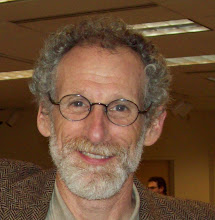Ms. G is a kindergarten teacher in a small school in a residential part of town surrounded by trees and houses, making it almost unnoticeable. The school serves students from kindergarten through sixth grade, with 558 students. The racial makeup of the student population is fifty-six percent White, fifteen percent Hispanic, fourteen percent Asian, six percent Black. Nineteen percent of the students are eligible for free or reduced lunches.
Ms. G earned her teaching credential at a Cal State University. She always enjoyed being around children and knew that she wanted to be a teacher. She first started teaching fourth grade at a school where she for five years. She was then offered a teaching position at her current school teaching Kindergarten and she has been teaching there for twenty years. She has no interest in teaching other grades.
When I entered her classroom, the first thing I noticed was that the decorations in the room were created by her students. Hanging from the ceiling were fall leaves that the students had painted. On the walls, there were paintings that the students painted along with their names proudly painted on the top. On a side board, there are pictures of a student, with the caption “Super kid,” along with an interview paper with the child’s favorite color, favorite food, etc. Every week there is a new super kid, so that every child will feel special for a week. The super kid can pass out pencils and will be at the front of the line for the entire week. Just from looking at the room, I could tell that the teacher deeply cared about her students and saw each one of them as individuals.
The layout of the classroom is organized to optimize learning in different contexts. There is a rug, where children can gather around when Ms. G is reading them a book. There are also three clusters of tables, organized as station 1,2, and 3. Each of the station has different activities. Every twenty minutes the students change stations and work on a different but related activity. Against the wall, there is a paint station, where students can explore their creative side by painting on poster paper, which will later be hung up on the wall.
Ms. G is well respected in the school, she has won many awards after being nominated by the parents and was even featured on television. At the request of their parents, two of her current students were put in her classroom after being with a different teacher. I first sat down with Ms. G during lunch to ask her some questions. I was curious to her teaching philosophy and how she is able to stay so energetic and positive after teaching for so many years. I wanted to know what she thought was important for her students to learn in her classroom.
Throughout the twenty years of teaching kindergarten, Ms. G has seen many changes. When she first started teaching, the purpose of kindergarten was for development; now it is all about fulfilling the curriculum standards. Her philosophy of education has always been for the support of the “whole child.” Now she feels that every time she turns around there is a new assessment test she has to administer. She does not feel that this is necessary for such small children. She feels that in kindergarten students must learn about manners, how to behave as good citizens, and having lessons that are geared to their development. She feels that the standards for kindergarten are too much, that they are putting too much pressure on young students. With their short attention span, it is hard for them to process that many information.
When asked the purpose of public education, Ms. G told me it is so that every child can have the chance to have a good education and succeed, no matter where they are from. She makes every effort to get to know each of her students individually, especially the ones that need her help the most. She has a folder that she regularly reviews which she uses to keep track of the progress of each student. On that folder, she had each of the parent fill out a questionnaire asking them the strengths of their child and what they hope their child will learn. She then uses that information when creating her lesson plans. That way her instructional strategies are tied to the needs and interests of each student. She mainly uses direct instruction, but when they go to their tables to work on their workbook, they are allowed to look at each other’s work and work together. To meet the needs of English learners, she finds ways to teach the individual child while also teaching to the rest of the class. For reading, she read the book Tortillas y Lullabies, a story that is also translated into Spanish. Both the English learner and the whole class enjoyed and benefited from this story.
I learned a lot from the interview. If I had merely observed her classroom, I would not have heard the wisdom that comes from teaching for 25 years. While the future of education is shaky, having a strong stance on what should be taught as well as having a passion and love for teaching is what will make someone endure. Ms. G is an exemplary model of what I hope to accomplish as I start teaching, and hope to still hold on to that passion after years of teaching as she has.
Subscribe to:
Post Comments (Atom)




No comments:
Post a Comment